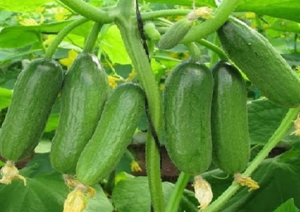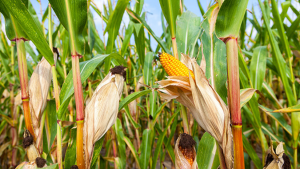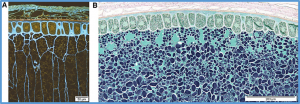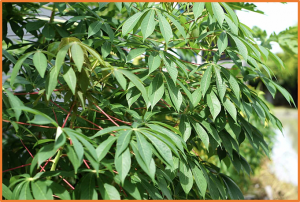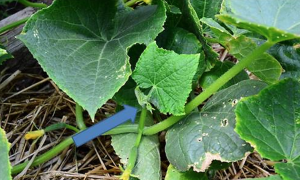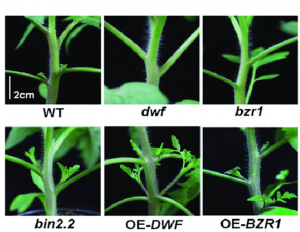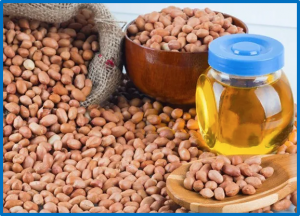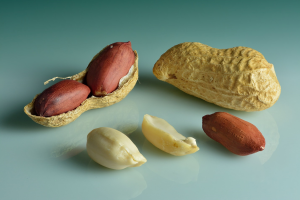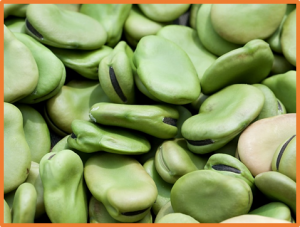Fruit color of cucumber is a very important agronomic trait, but most of the genes affecting cucumber white fruit color are still unknow, and no further studies were reported on the effect of cucumber fruit quality caused by white fruit color genes. Here, we obtained a white fruit mutant em41 in cucumber by EMS mutagenesis. The mutant gene was mapped to a 548 kb region of chromosome 2. Through mutation site analysis, it was found to be a null allele of CsARC6 (CsaV3_2G029290). The Csarc6 mutant has a typical phenotype of arc6 mutant that mesophyll cells contained only one or two giant chloroplasts. ARC6 protein was not detected in em41, and the level of FtsZ1 and FtsZ2 was also reduced.
Low-temperature conditions cause slow maize (Zea mays L.) seed metabolism, resulting in slow seedling emergence and irregular seedling emergence, which can cause serious yield loss. Thus, improving a maize cultivar’s low-temperature germination ability (LTGA) is vital for increasing yield production. Wild relatives of maize, such as Z. perennis and Tripsacum dactyloides, are strongly tolerant of cold stress and can thus be used to improve the LTGA of maize. In a previous study, the genetic bridge MTP was constructed (from maize, T. dactyloides, and Z. perennis) and used to obtain a highly LTGA maize introgression line (IB030) by backcross breeding.
As a specified endosperm cell type, the aleurone has an abundance of various nutrients. Increasing the number of aleurone layers is a practicable way of developing highly nutritious cereals. Identifying genes that can increase aleurone thickness is useful for the breeding of aleurone traits to improve the nutritional and health values of rice. Here, we found that iodine staining could efficiently distinguish the aleurone layers
Cassava (Manihot esculenta) is an annual root crop which provides the major source of calories for over half a billion people around the world. Since its domestication ~10,000 years ago, cassava has been largely clonally propagated through stem cuttings. Minimal sexual recombination has led to an accumulation of deleterious mutations made evident by heavy inbreeding depression.
Plant architecture depends on the spatial regulation of meristems from both main axis (MA) and lateral branches (LBs). Fate (indeterminate or determinate) of these meristems is a crucial source of architectural diversity determining crop productivity and management. CENTRORADIALIS/TERMINAL FLOWER 1/SELF-PRUNING (CETS) gene family have been well known as pivotal regulators for indeterminate/determinate growth of MA. Nevertheless, genes that regulate LB indeterminacy/determinacy remained unclear.
The enhanced performance of hybrids through heterosis remains a key aspect in plant breeding; however, the underlying mechanisms are still not fully elucidated. To investigate the potential role of transcriptomic and epigenomic patterns in early expression of hybrid vigor, we investigated gene expression
Light plays an important role in determining plant architecture, which greatly influences crop yield. However, the precise mechanisms by which light signaling regulates bud outgrowth remain to be identified. Here, we show that light regulates bud outgrowth via both HY5 and brassinosteroid (BR)-dependent pathways in tomato. Inactivation of the red-light photoreceptor PHYB, or deficiencies in PHYB or the blue-light photoreceptor CRY1a
Although increasing the oil content of peanut to meet growing demand has long been a primary aim of breeding programs worldwide, the mining of genetic resources to achieve this objective has obviously lagged behind that of other oil crops. In the present study, we developed an advanced recombinant inbred line population containing 192 F9:11 families derived from parents JH5 and KX01-6. We then constructed a high-resolution genetic map covering 3,706.382 cM, with an average length of 185.32 cM per linkage group, using 2840 polymorphic SNPs.
Peanut is a unique legume crop because its pods develop and mature underground. The pegs derive from flowers following pollination, then reach the ground and develop into pods in the soil. Pod number per plant is influenced by peanut growth habit (GH) that has been categorized into four types, including erect, bunch, spreading and prostrate. Restricting pod development at the plant base, as would be the case for peanut plants with upright lateral branches, would decrease pod yield.
Faba bean (Vicia faba L.) is a high-protein grain legume crop with great potential for sustainable protein production. However, little is known about the genetics underlying trait diversity. In this study, we used 21,345 high-quality SNP markers to genetically characterize 2678 faba bean genotypes. We performed genome-wide association studies of key agronomic traits using a seven-parent-MAGIC population and detected 238 significant marker-trait associations linked to 12 traits of agronomic importance.


 Curently online :
Curently online :
 Total visitors :
Total visitors :
